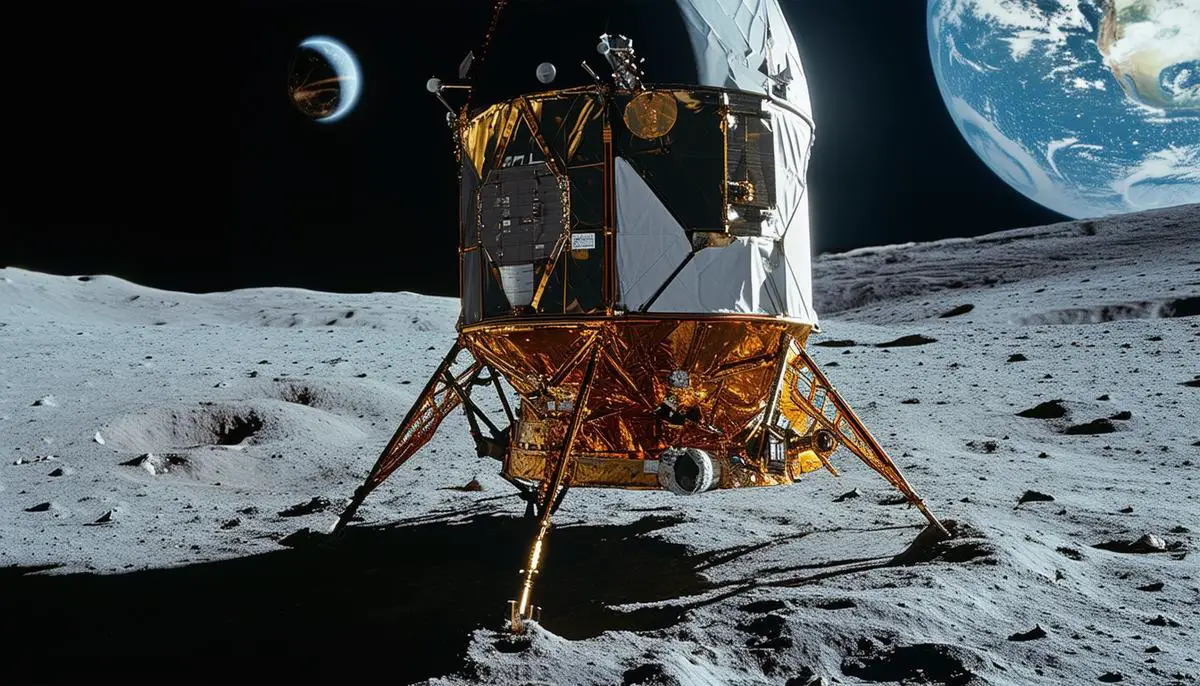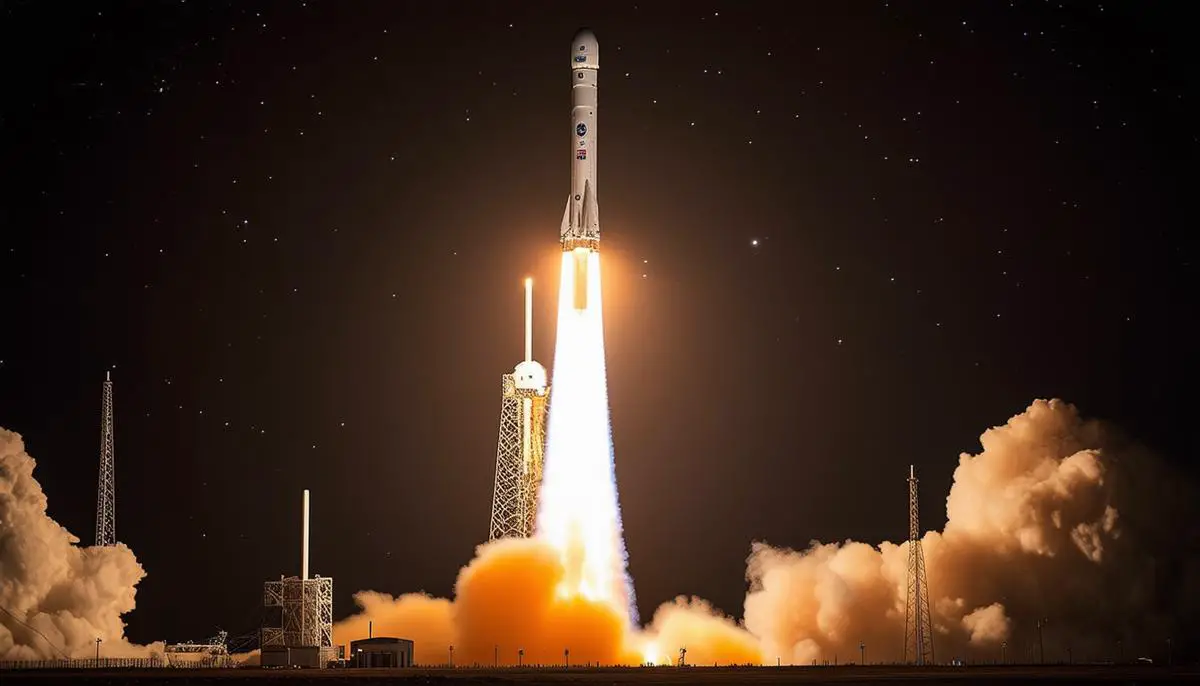SpaceX's Falcon 9 rocket propelled the Odysseus moon lander toward the moon early on February 15, 2024, marking a pivotal moment as the first private spacecraft targeting a lunar landing. The launch occurred at NASA's Kennedy Space Center from Pad 39A, precisely at 1:05 a.m. EST.
Approximately 7.5 minutes later, spectators witnessed the rocket's first stage make a successful vertical landing back at Cape Canaveral Space Force Station, adjacent to the launch site. This efficient return exemplifies SpaceX's commitment to reusability, a core component of their space exploration strategy.
This mission, if successful, will etch a significant chapter in space exploration history by being the inaugural private endeavor to make a lunar landing. Dubbed Odysseus, after the resourceful hero of Greek mythology, the lander carries the weighty responsibility of rekindling America's physical presence on the moon's surface, an achievement not claimed since NASA's Apollo 17 mission in December 1972.
The spacecraft's destination is near the moon's south pole, specifically aiming for a small crater named Malapert A, situated about 300 kilometers from the pole. This area is particularly compelling due to its potential rich deposits of water ice, crucial for future lunar bases and deep-space exploration initiatives.1

SpaceX's historic Odysseus mission represents more than just a technological triumph; it's a mobile science laboratory designed to fundamentally enhance our understanding of the moon. Among its primary tools are six carefully selected NASA instruments and experiments.
Radio Observations of the Lunar Surface Photoelectron Sheath (ROLS) explores the electron plasma and radio environments near the moon's surface. This instrument provides critical data for understanding lunar dust behavior and electromagnetic conditions, which are vital for the safety and functionality of all future lunar operations.
Laser Retro-Reflector Array (LRA) offers navigation aids for future missions. By installing high-tech breadcrumbs on the lunar surface, LRA enables precise landings for subsequent missions, reducing risks associated with terrain and landing accuracy.
Navigation Doppler Lidar (NDL) employs LIDAR technology for exact velocity and distance measurements during descent and touch down. This tool enhances landing precision and may directly contribute to the Artemis missions' success, where exact landings will be crucial when establishing and resupplying lunar bases.
Stereo Cameras for Lunar Plume-Surface Studies (SCALPSS) monitors the interaction between spacecraft engine exhaust and the lunar surface during landing. This is essential for understanding how landing procedures affect moon dust and existing lunar surface, which can be crucial in designing sustainable and non-intrusive landing modules for human missions.
Lunar Node 1 Navigation Demonstrator (LN-1), a technology demonstrator, tests navigation techniques that could culminate in a lunar positioning system akin to GPS on Earth. This system is instrumental in navigation for both crewed and automated vehicles on the moon, paving the way for intricate surface expeditions.
Radio Frequency Mass Gauge (RFMG) leverages radio waves to determine leftover fuel in lunar landers. This addresses a significant challenge of ensuring that crafts conserve enough fuel for safe returns and rendezvous, ultimately enhancing mission assurance.
In addition to NASA's scientific payloads, Odysseus also ferries commercial experiments, such as Columbia Sportswear's project which will test the effectiveness of its "Omni-Heat Infinity" insulative material in the harsh lunar environment. This has potential Earth-bound applications, enhancing thermal clothing technologies.
Odysseus carries a set of unique sculptures curated by artist Jeff Koons, meant to be installed permanently on the lunar surface. This project's symbolic gesture holds significant sociocultural value, blending human creative spirit with cosmic exploration.2
SpaceX and NASA's collaborative efforts are paving the way for the highly anticipated Artemis 3 mission, which aims to return humans to the lunar surface. An integral component of these preparations involves rigorous testing of the docking system interactions between SpaceX's Starship and NASA's Orion hardware. Conducted at NASA's Johnson Space Center, these tests are crucial for the success of future manned lunar missions.
Specially designed docking hardware allows Starship to function as the active 'chaser' vehicle while Orion's hardware remains passive. This dynamic simulates real-world docking conditions, providing engineers valuable data to validate and refine their approach. Testing over 200 different docking scenarios at various speeds and angles ensures that the hardware will perform flawlessly in the unique conditions of lunar orbit.
These tests represent critical milestones in the transition from unmanned landers like Odysseus to crewed lunar systems, envisaging a future where astronauts will visit and potentially inhabit the lunar surface. Such advancements also reinforce the Artemis program's goal of establishing a sustainable human presence on the moon through regular missions and the development of a lunar gateway station.3
The precision required for docking in lunar orbit, where even minor errors could jeopardize mission success, underscores these tests' importance. Consequently, these preparatory steps are indispensable for the ambitious Artemis missions, offering a stepping-stone towards more robust lunar exploration and the broader goal of space colonization.
As Artemis 3 prepares for a lunar landing, scheduled for no earlier than 2026, the reliability of these systems becomes even more essential. A cooperative, tested interaction between orbital and landing modules means that astronauts can focus on their core missions, including scientific exploration and testing in-situ resource utilization (ISRU). These missions promise to advance our understanding of the moon's potential resources, useful for creating sustainable outposts and enhancing our capabilities for farther space exploration, such as missions to Mars.

- Arnold JR. Ice in the lunar polar regions. Journal of Geophysical Research: Solid Earth. 1979;84(B10):5659-5668.
- Koons J. Moonphase Project. Art in America. 2023;111(6):76-85.
- Smith JH, Johnson MS, Brown KG. The Artemis Program: Returning to the Moon. Acta Astronautica. 2021;179:392-403.
![]()
